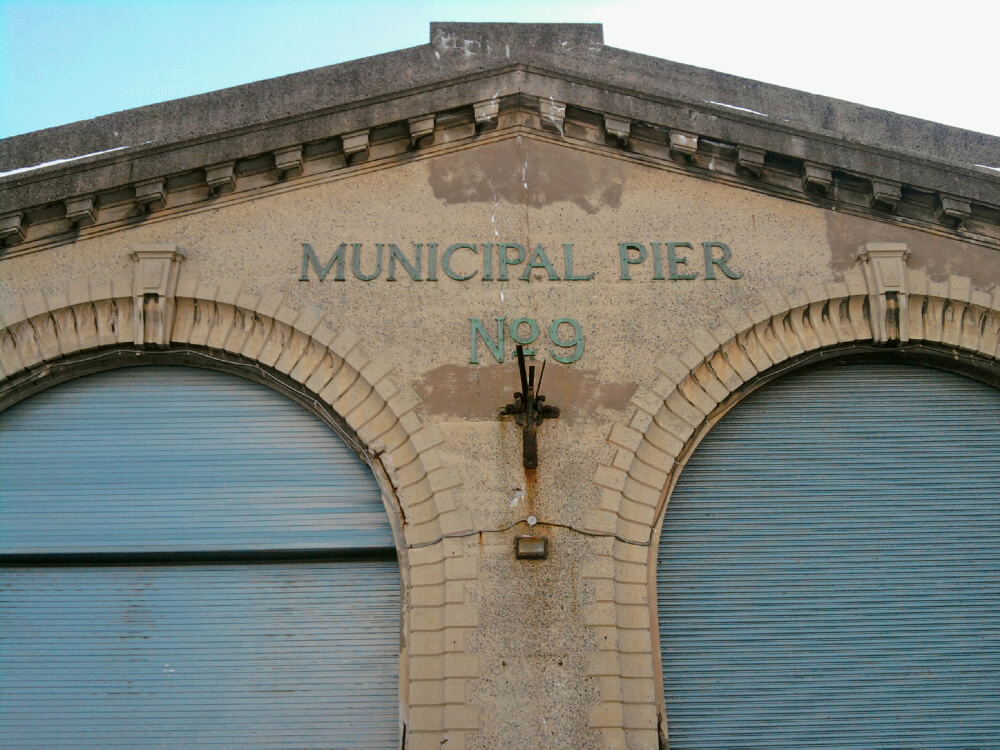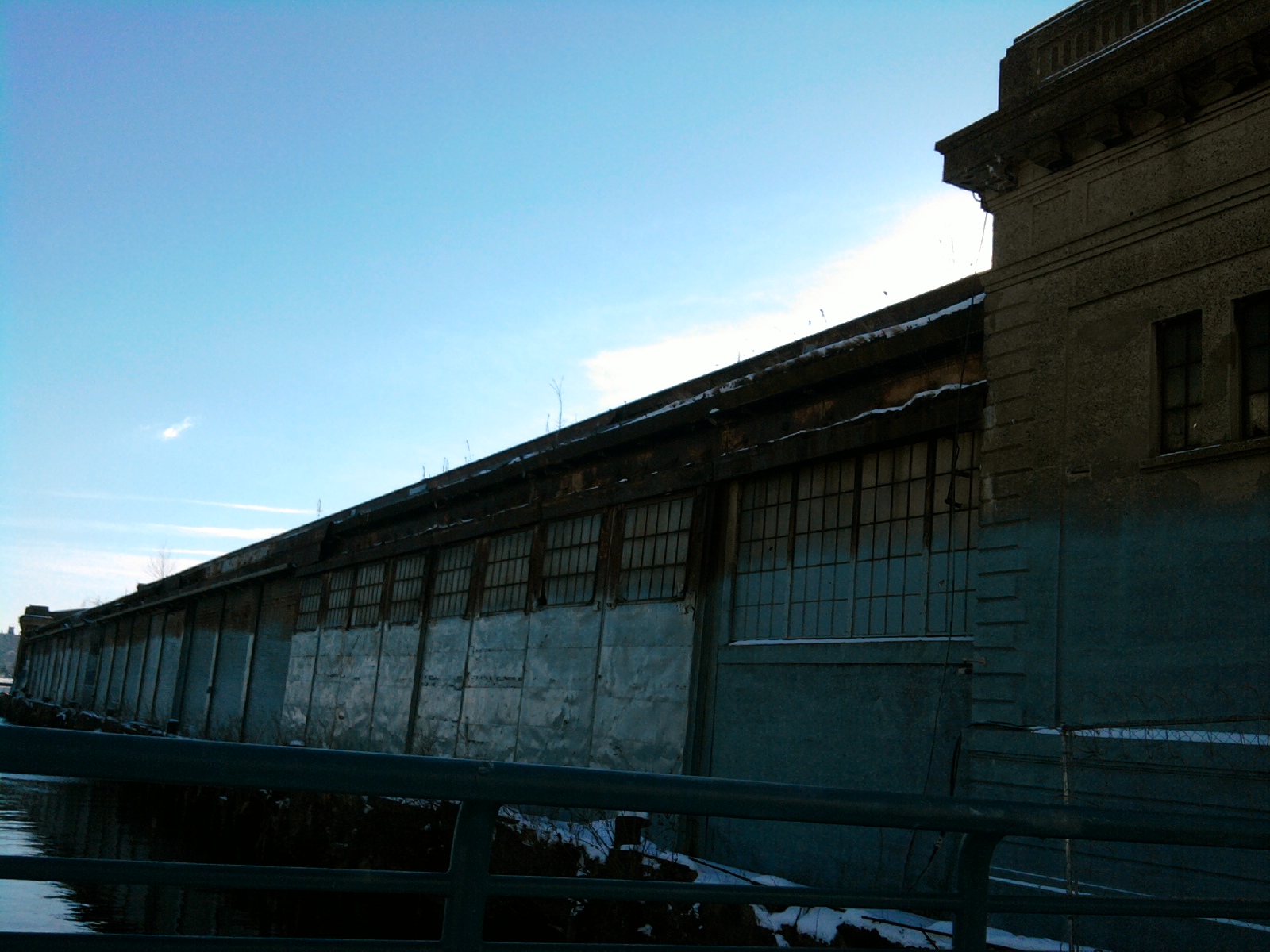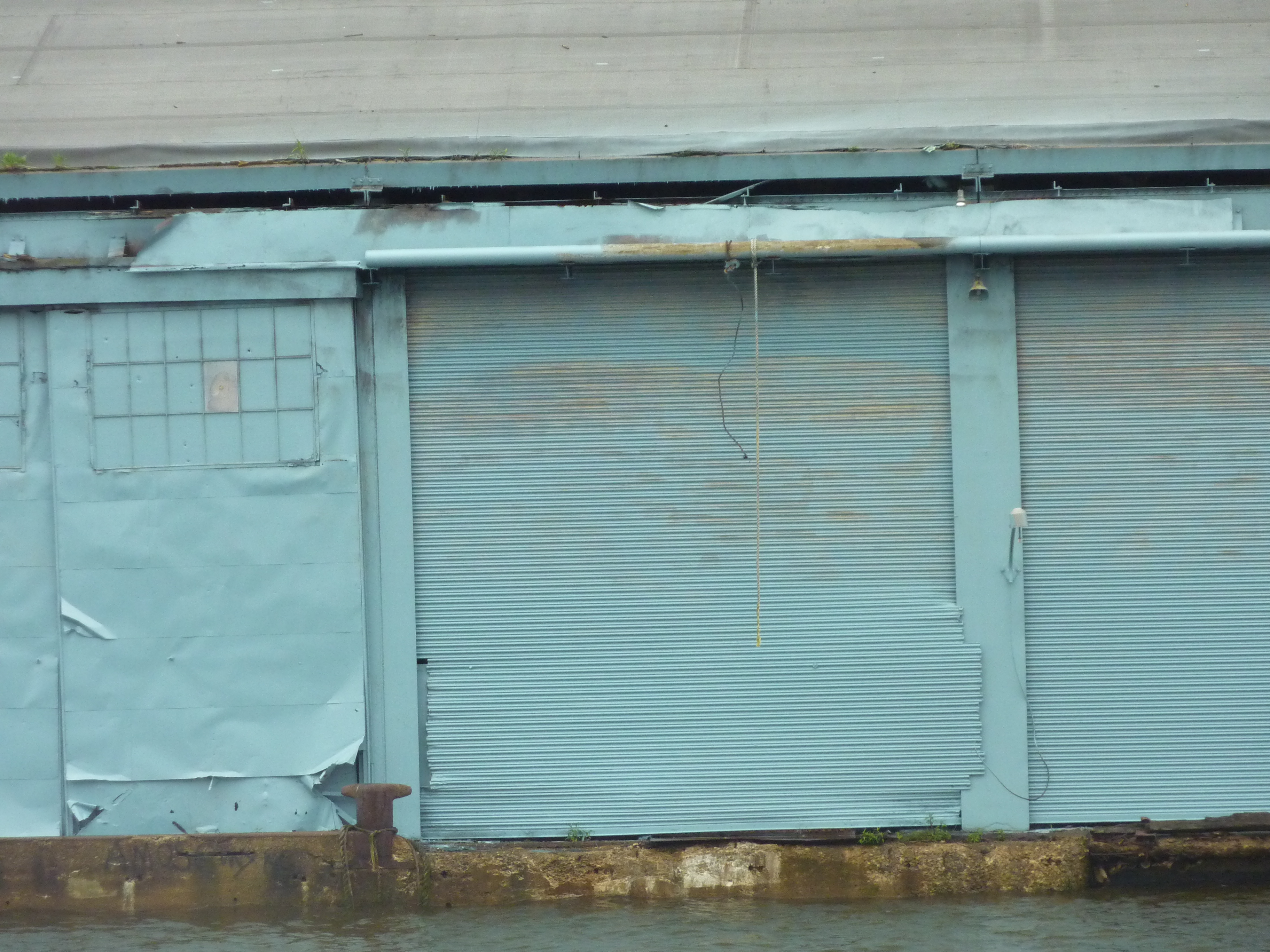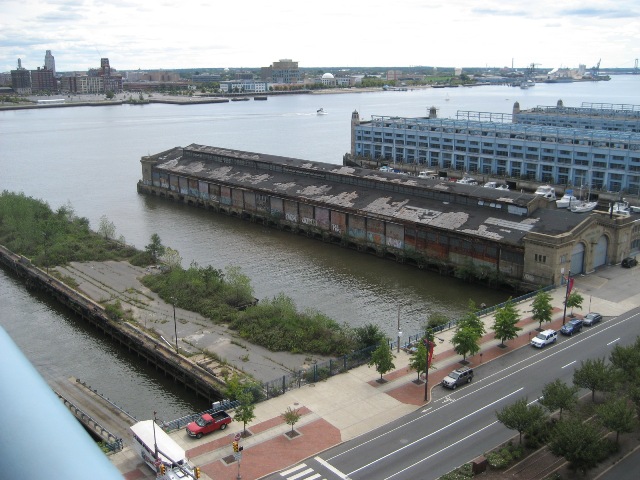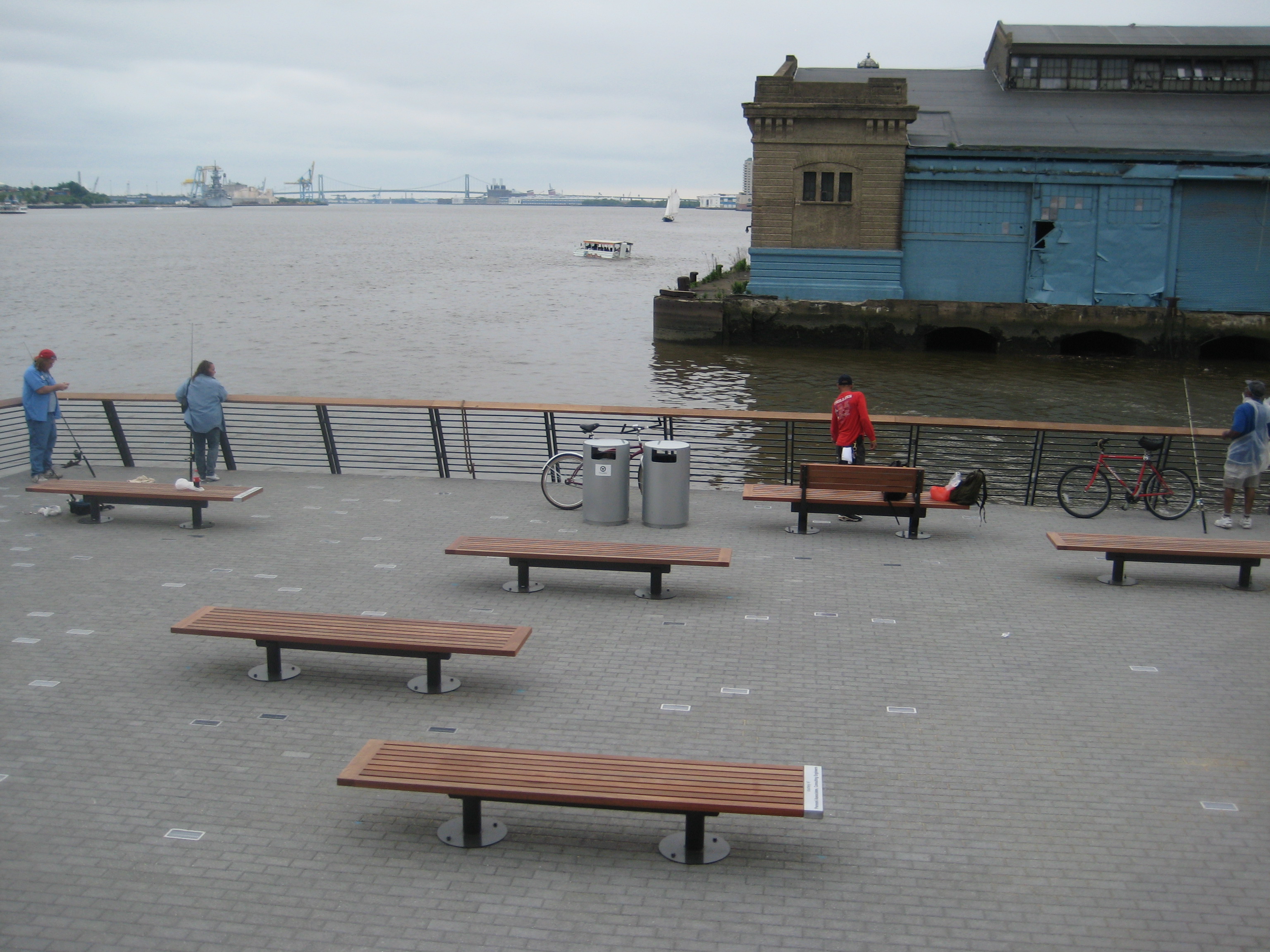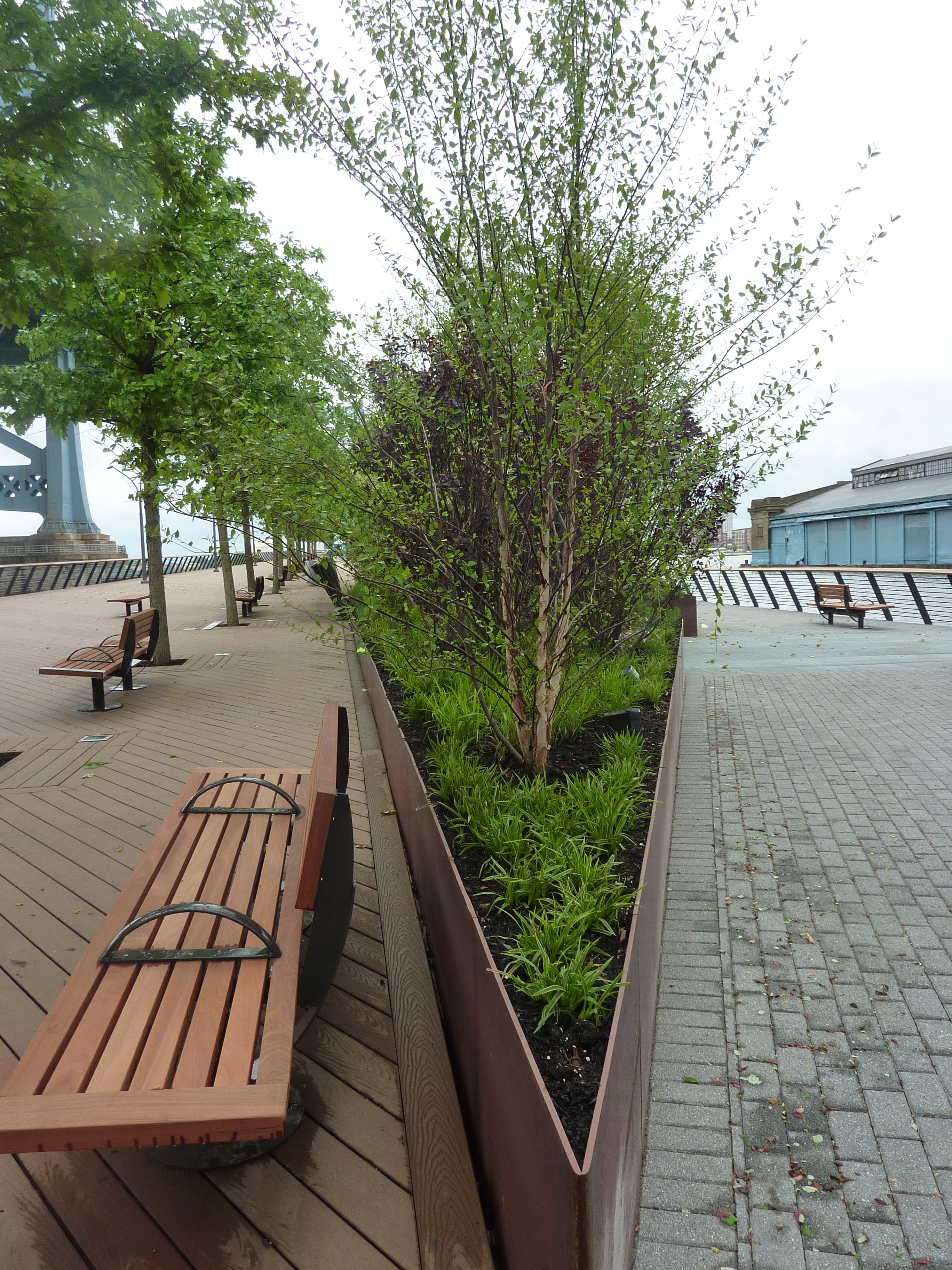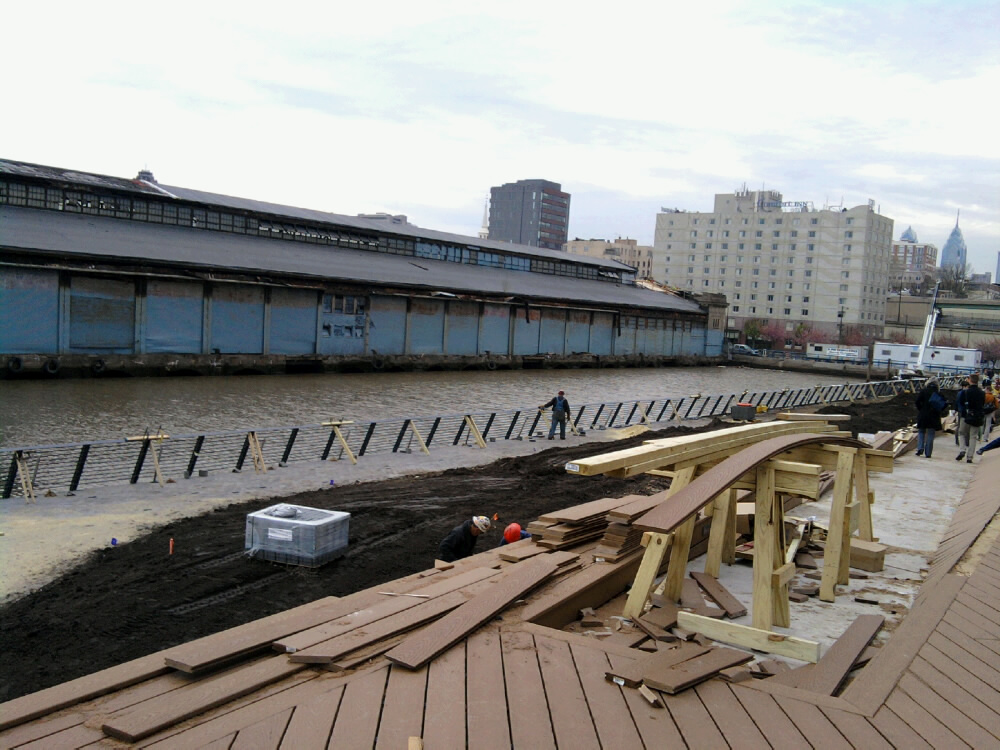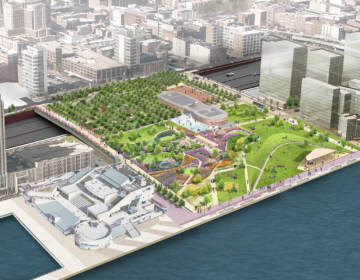Study on the future of Pier 9 begins
The Delaware River Waterfront Corporation has begun considering the future of Pier 9 – the rusty and baby blue waterfront property located just south of the new Race Street Pier park.
Thursday morning, the DRWC board’s executive committee hired Bohlin Cywinski Jackson – a firm which worked on the Liberty Bell Center – to study possible uses for the structure, which now primarily functions as a very big garage. The board members unanimously voted to pay Bohlin Cywinski Jackson up to $75,000 for the feasibility study, which is expected to be completed in about three months.
DRWC President Tom Corcoran, Board Chairman Donn Scott and other board members have for months talked about the importance of determining the structure’s fate. Possibilities discussed include everything from restaurants to a festival space to a rentable events venue. Board members have said they are interested in providing amenities that would work in conjunction with Race Street Pier, including cafes and bathrooms.
Bohlin Cywinski Jackson will determine what must be done structurally to bring the building up to code. A key element of that, said board member Alan Greenberger, will be figuring out how best to get people out of the building in case of fire. “The pier juts far out into the water. Right now, there is only one way out,” he said.
Greenberger, who is also deputy mayor for planning and economic development, was among the board members who interviewed the top four firms from the 12 which applied for the job. He said it was clear that Bohlin Cywinski Jackson had already put much thought into the exit situation and other possible physical changes that may need to be made to the building.
There will need to be an additional door in the structure, he said. From there, one possible solution would be hanging a fire-escape like structure on the outside of the building. Another would be creating a fire-proof hallway within the structure, but that would cut into the space for other uses. Yet another solution – one that Greenberger cautioned had not yet been vetted for legal or practical concerns – is a physical linking of Pier 9 to Race Street Pier.
DRWC planner Sarah Thorp said it was not just Bohlin Cywinski Jackson’s attention to the structural, fire and physical envelope questions that was impressive, but also the firm’s attention to the relationship between Pier 9 and Race Street Pier, and the rest of the neighborhood.
“They showed creative spirit in thinking about the circulation of the building with Race Street Pier and the neighborhood as a whole,” she said.
Greenberger agreed. “They were the team to most clearly understand that the Pier and the building need to live in some kind of relationship with each other,” he said.
One of the biggest questions the firm will have to address is a pretty basic one, Greenberger said after the meeting: “How much money is it going to cost us to bring this building up to a level where it is marketable?”
According the RFP that DRWC issued for this project, Municipal Pier 9 was built in 1919 as part of Philadelphia’s efforts to create piers for commerce after World War I. Owned by the city, it was operated by the United Fruit Company, and like neighboring Pier 11 – now Race Street Pier Park – it was used by national and international ships carrying fruit, salt and general cargo.
Check out the RFP posted on DRWC’s website to see some interesting old photos of the pier.
VIDEO TO COME
Reach the reporter at kgates@planphilly.com
WHYY is your source for fact-based, in-depth journalism and information. As a nonprofit organization, we rely on financial support from readers like you. Please give today.



